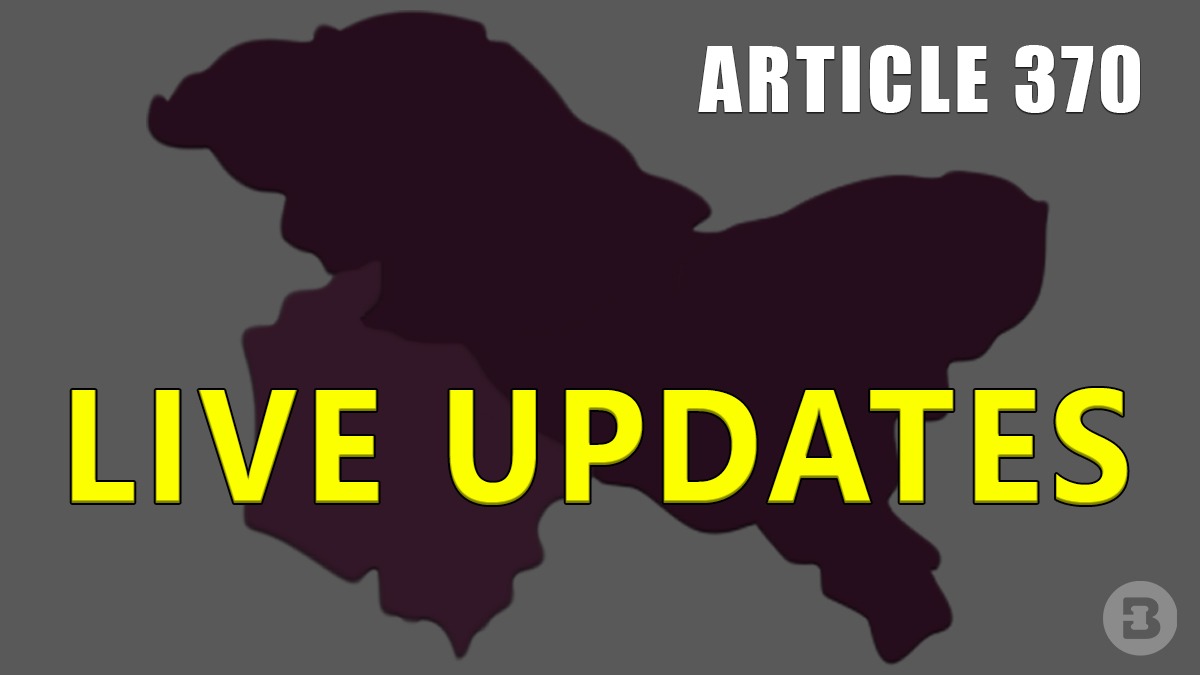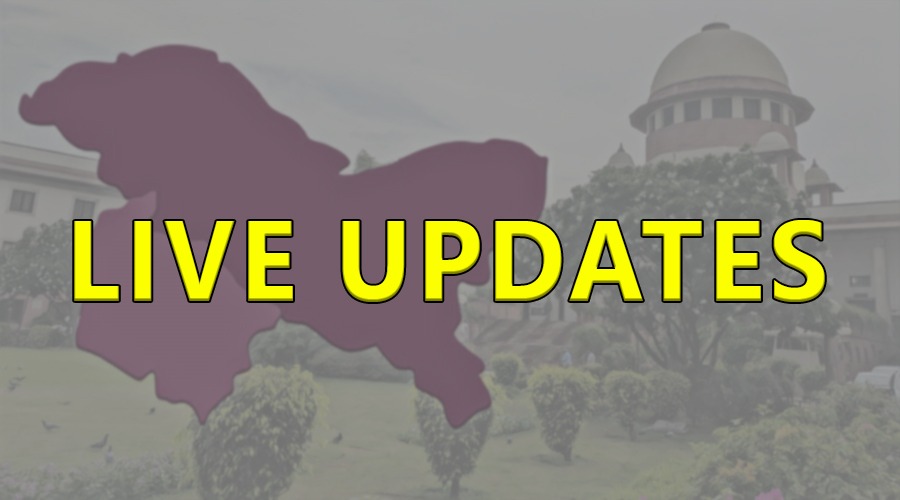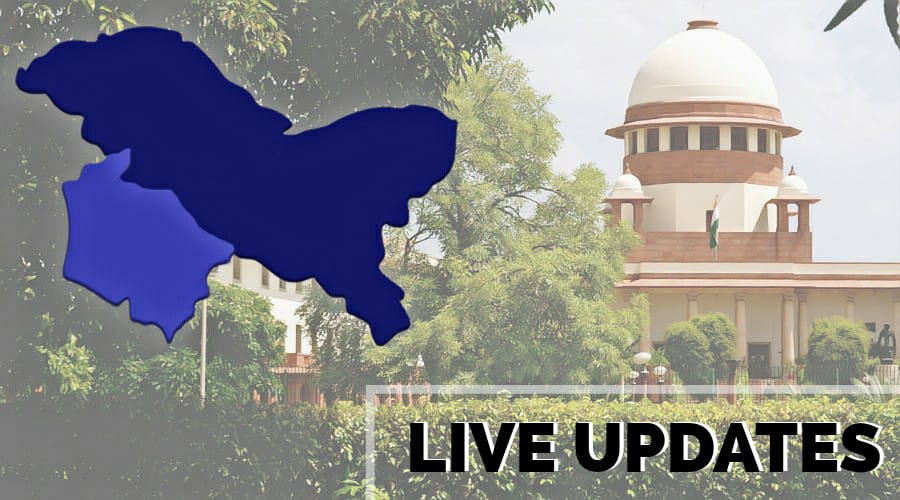Here's what happened at the hearings back in December:
They're asking Dinesh Dwivedi, appearing for PUCL, how long he'll need to complete his argument asking for the matter to be referred to a larger Bench.
@TheQuint
#Article370
#JammuAndKashmir
Rajeev Dhavan, for Sajad Lone's People's Conference, says Dwivedi + anyone else who wishes to argue that the matter should be referred to larger bench, should stick to that preliminary issue for now.
@TheQuint
@TheQuint
#Article370
#JammuAndKashmir
@TheQuint
Says that after this happened in 1957, no power was available to the government to take the actions it did on 5 August and after.
@TheQuint
@TheQuint
@TheQuint
#Article370
#JammuAndKashmir
@TheQuint
Then reads from Maharaja's Proclamation explaining how J&K would operate with rest of India under Constitution of India, which hadn't yet come into force.
@TheQuint
#Article370
#JammuAndKashmir
@TheQuint
He acknowledges that this may seem controversial, but says that is what the text clearly says.
@TheQuint
Link:
indiankanoon.org/doc/666119/
@TheQuint
@TheQuint
The language in Art 370(2) & (3) would be "otiose" (pointless), Dwivedi says, if it were to continue after the J&K Constitution was finalised.
@TheQuint
@TheQuint
After all this, Justice Kaul jokes that the pressure of the arguments so high, it is being felt even in the back of the courtroom]
He notes that these Debates were referenced in the 1959 Prem Nath Kaul judgment of the SC (which supports his view) but not in the 1968 Sampat Prakash judgment.
@TheQuint
constitutionofindia.net/constitution_a…
(See paras 10.154. 300-310)
@TheQuint
@TheQuint
Dwivedi says this is an alternative argument, in event the court finds that #Article370 continued.
@TheQuint
indiankanoon.org/doc/816126/
Raju Ramachandran for one of the petitioners had already referred to this case, though not for this purpose.
@TheQuint
➡️ On sub-clause 2 of #Article370


@TheQuint

Dwivedi continued to read paras from the Prem Nath Kaul judgment, to buttress his argument about what the drafters of the Constitution intended.
#Article370
#JammuAndKashmir
@TheQuint
#Article370
#JammuAndKashmir
@TheQuint
#Article370
#JammuAndKashmir
@TheQuint
Link: indiankanoon.org/doc/1573666/
@TheQuint
thequint.com/news/law/artic…
@TheQuint
#Article370
#JammuAndKashmir
@TheQuint
"You would have to do something extra-constitutional for that, which is of course what they did", he says.
@TheQuint
He says 370(1)(d) could not be used to change 370 itself.
@TheQuint
#Article370
#JammuAndKashmir
@TheQuint
He says the scheme of #Article370 and #JammuAndKashmir 's relationship with Union of India was "frozen in time in 1957".
@TheQuint
UPDATE:
The case has been adjourned till tomorrow, Wednesday 22 January.
#Article370
#JammuAndKashmir
@TheQuint










